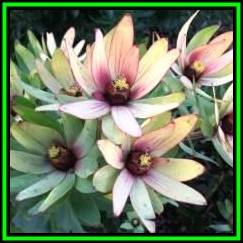
Leucadendron sessile Seeds - Endemic Shrub Protea Cut Flower Evergreen Fynbos - New
Check my rate
| Main centres: | 1-3 business days |
| Regional areas: | 3-4 business days |
| Remote areas: | 3-5 business days |

| Main centres: | 1-3 business days |
| Regional areas: | 3-4 business days |
| Remote areas: | 3-5 business days |
Leucadendron is a South African endemic genus in the Protea family, Proteaceae. The genus consists of about 80 species of evergreen shrubs and small trees. They are a prominent part of the fynbos ecoregion and vegetation type. Most species are shrubs that grow up to 1 m tall, some to 2 or 3 m. A few grow into moderate-sized trees up to 16 m tall. The leaves are spirally arranged, simple, entire, and usually green, often covered with a waxy bloom, and in the case of the Silvertree, with a distinct silvery tone produced by dense, straight, silky hairs. This inspired the generic name Leucadendron, which literally means "white tree". The flowers are produced in dense inflorescences; they are dioecious, with separate male and female plants. The seed heads, or infructescences, of Leucadendron are woody cone-like structures. This gave rise to their generic common name cone-bush. They are prized for their exotic-looking attractive flowers, cones and foliage. Leucadendron blossoms make excellent cut flowers, keeping their gorgeous red, burgundy, green or yellow color for up to three weeks. In the garden they do well in rockeries and also make excellent feature plants.
Leucadendron sessile commonly known as Sun Conebush, Minipompom Conebush, Babyrosette Conebush or Western Sunbush in English and Kleinkoprosettolbos in Afrikaans is a South African endemic species found in the Western Cape Province from Witzenberg to Slanghoek and Jonkershoek to Kogelberg. Leucadendron sessile is an easy-to-grow fynbos shrub that turns bright yellow during winter and spring. Leucadendrons are often overlooked, in favour of their close relatives, the proteas and pincushions, yet they are well worth a place in the garden as they are often easier to grow and have decorative brightly coloured foliage. Leucadendron sessile is a 1-2 m tall, rounded, dense, bushy shrub arising from a single stem at ground level, and usually branching low down. Branches are stout and short.
|